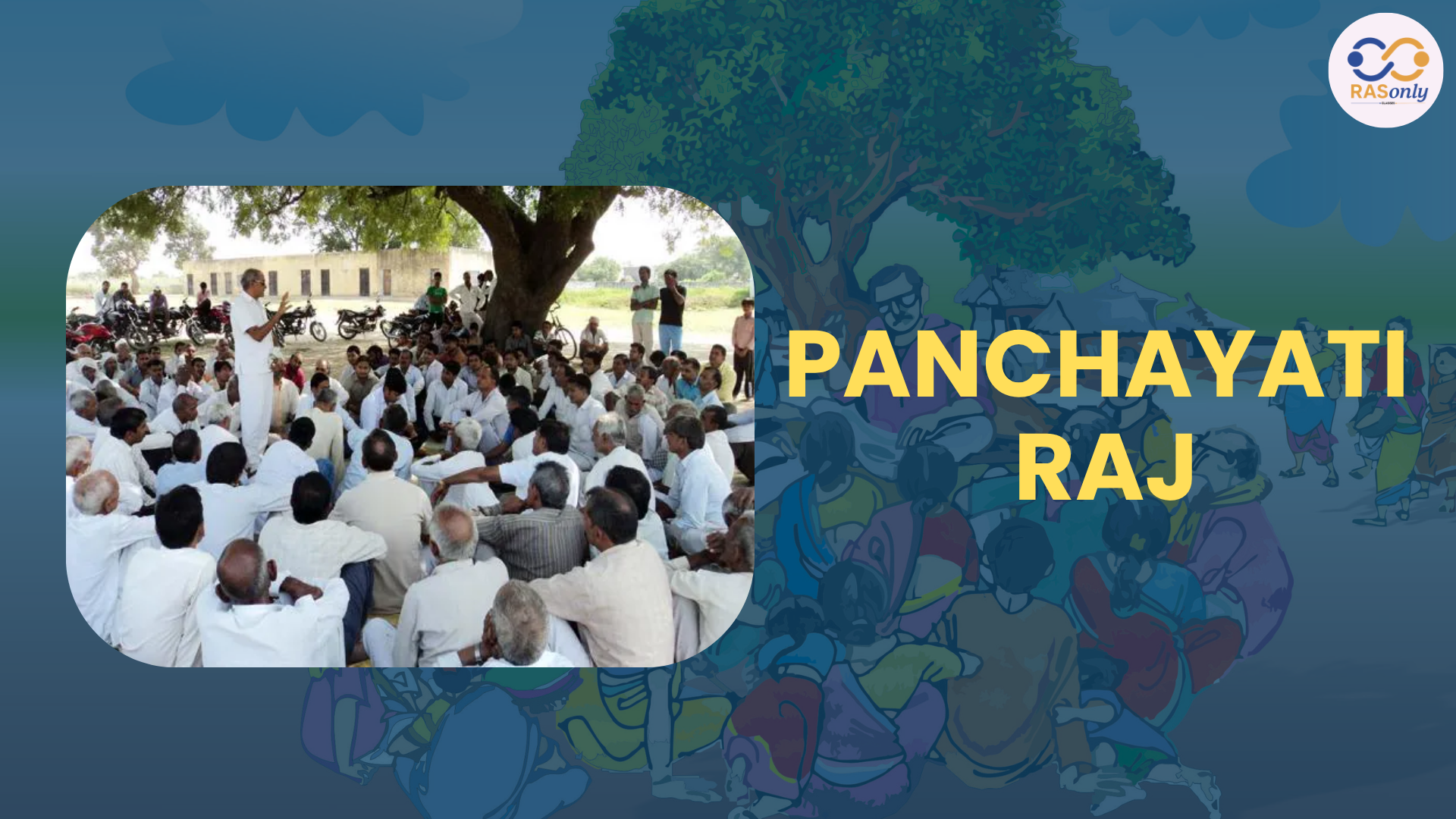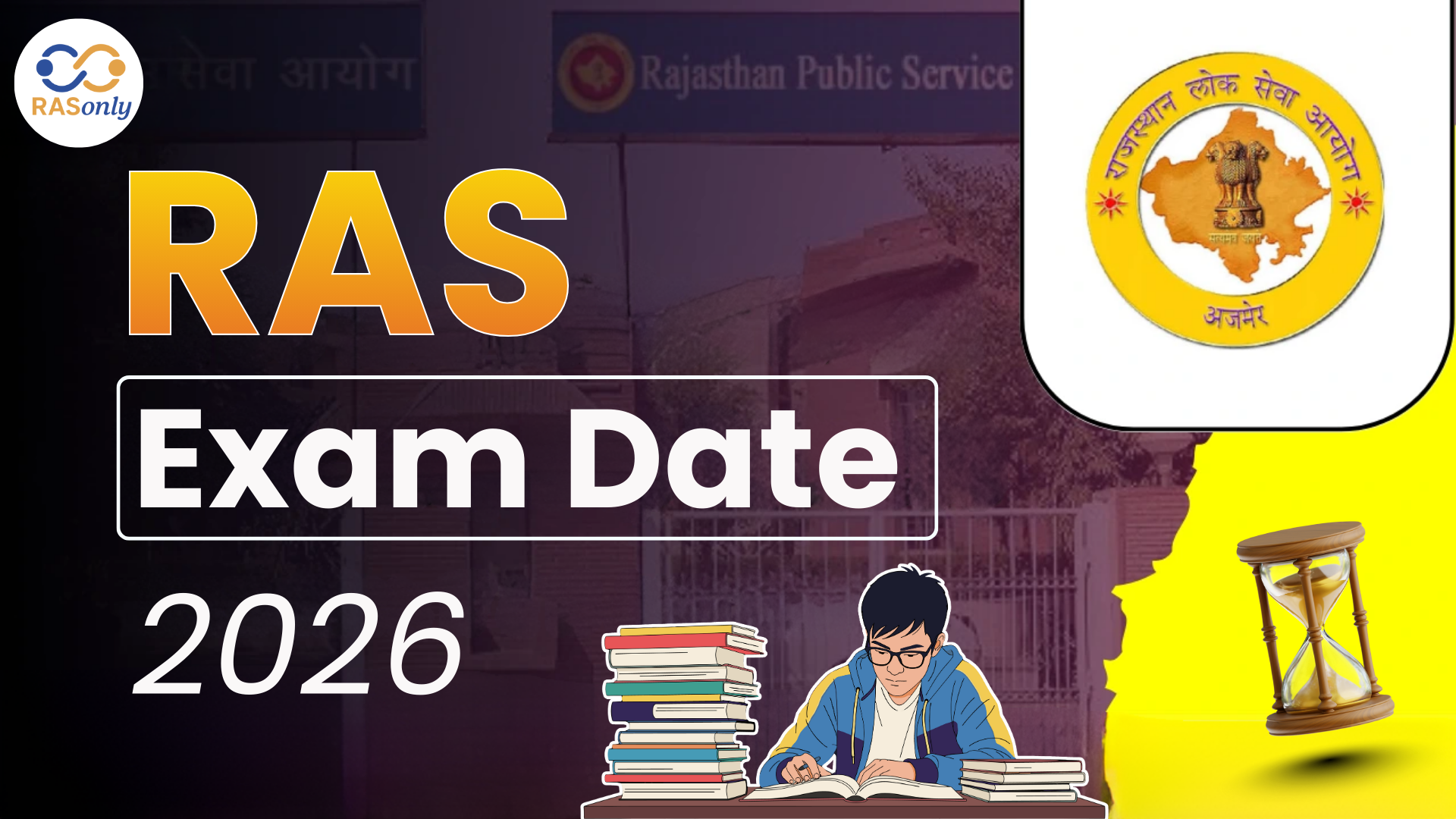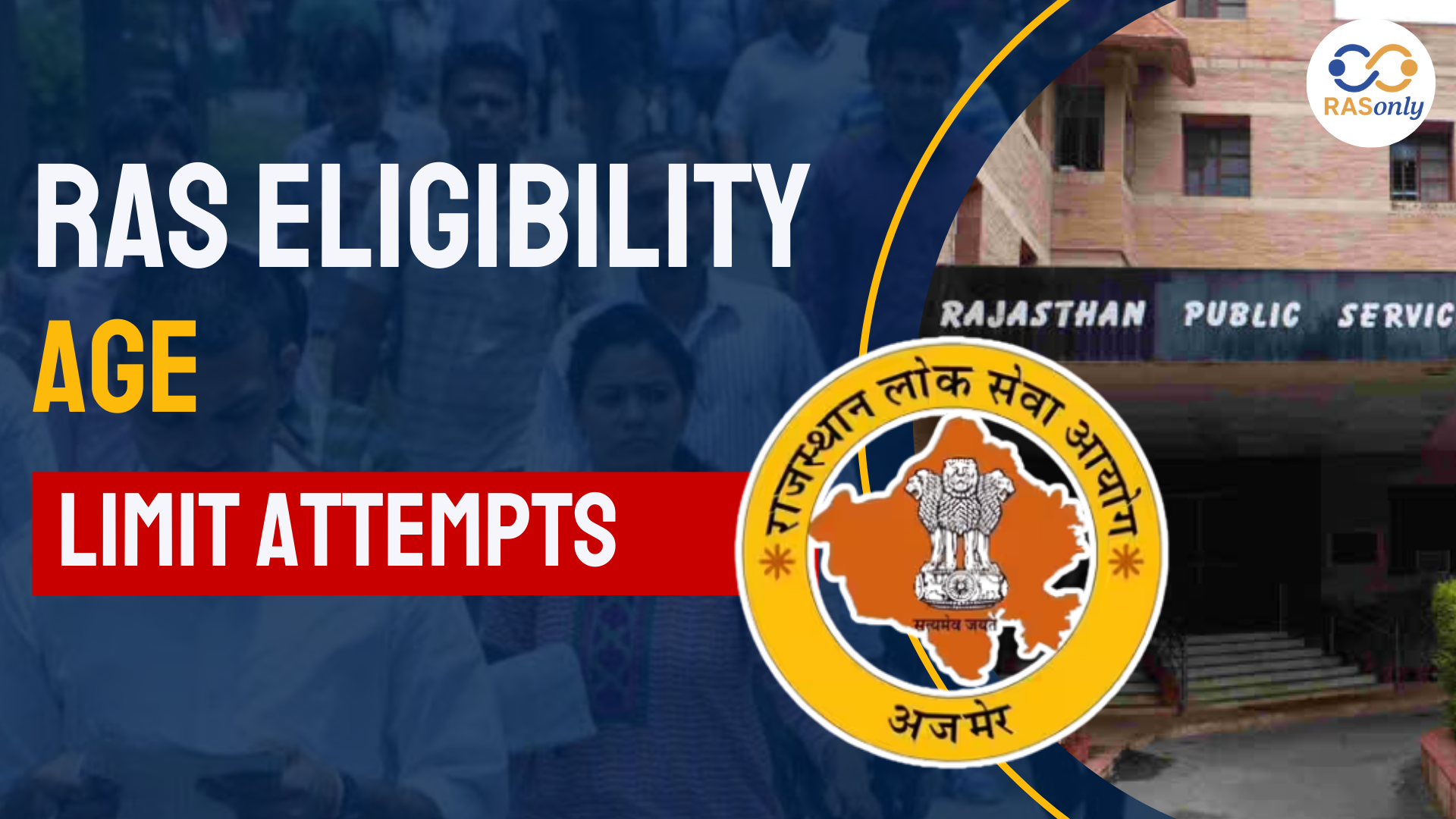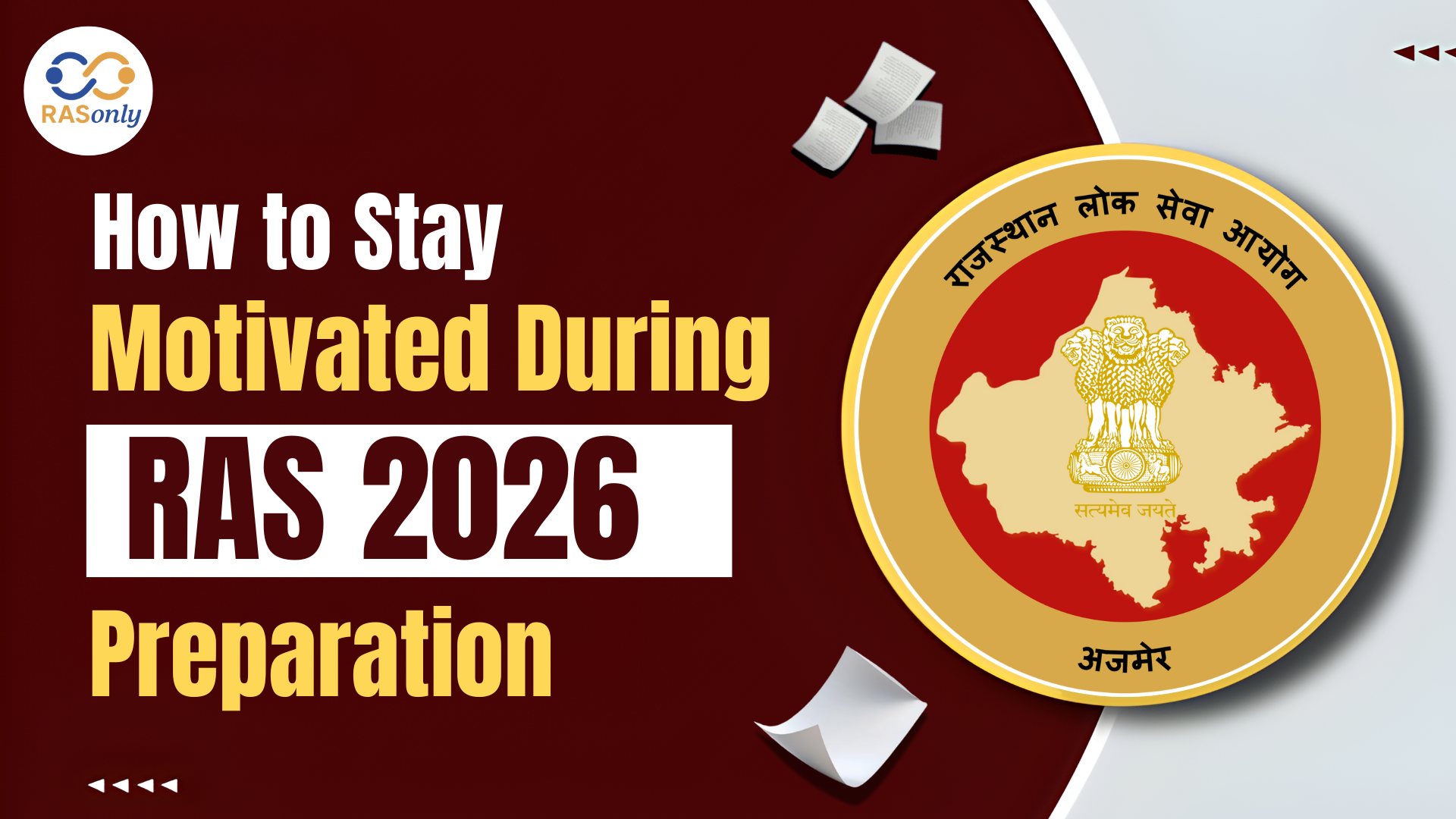RAS Exam Date 2026 for Notification, Prelims, Mains Date
- >
- RAS Preparation Resources
- >
- Panchayati Raj Institutions
Panchayati Raj Institutions

Panchayati Raj Institutions (PRIs) are the local democratic institutions in India that encourage decentralized governance and rural growth. Institutionalized in the 73rd Constitutional Amendment, they have given powers to the local communities via elected council, planning roles and resource management. PRIs enhance inclusiveness, social justice, and participation in the rural regions.

Panchayati Raj Institutions (PRIs) act as the pillars of the grassroot democracy in India, facilitating decentralized governance and participatory development among rural settle-downs. Grounded in the ancient Indian traditions and codified by the 73rdConstitutional Amendment Act, 1992, the PRIs have become very significant instruments in local self-governance. They aim at empowering rural people by decentralizing administrative and administrative duties as well as monetary resources to elected local institutions. PRIs are able to promote inclusive governance, rural empowerment and good execution of developmental projects through this structure since India believes in democratic decentralization.
What is PRI?
- A system of rural Local Self-government in India, Panchayati Raj Institutions (PRI) are the local government systems in two-thirds of Indian states.
- Local Self-Government is the aspect where the local body is free to handle their own matters by putting up a representative into it.
- The 73rd Constitutional Amendment Act of 1992, came up with the constitutionalization of PRI, to support democracy at the grass root level and decentralize rural development authority to local governments.
Key Details for RPSC RAS Mains
Evolution of Panchayati raj in India
Vedic Era:
- Panchayatan (a congregation of five individuals, where there is a spiritual leader).
- References to democratic institutions such as Sabha, Samiti and Vidatha in the ancient scriptures.
Epic Era:
- Ramayana and Mahabharata meet our village self government.
- Gramik was the head of a village, and other officials ruled over the bigger units (10, 100, 1,000 villages).
Ancient Period:
- Panchayats in villages are discussed in Arthashastra and Manu Smriti.
- Mauryan and Gupta town government.
- Poor participation of women in the village governance.
Medieval Period:
- Village administration under the sultanate system comprised Mukkaddam, Patwari and Choudhrie.
- The caste system and feudalism diminished autonomous villages by the Mughal rule.
British Period:
- There was loss in local autonomy of village panchayats.
- Elected representatives were introduced by Mayo, Resolution (1870).
- The reforms that were made by Lord Rippon (1882) formed the basis of local democratic institutions.
- Local governance changed into provinces because of the implementation of Montagu Chelmsford Reforms (1919).
Post-Independence Period:
- Constitution (1950): Article 40 (principles of Directive). Panchayats (Article 40).
- Rural development programs that were developed by Community Development Programs (CDP) and National Extension Service (1953) did not perform well.
- Balwant Rai Mehta Committee (1957) suggested a three level system of PRI: Grama Panchayat, Panchayat Samiti and Zilla Parishad.
- One intended two tier system developed by Ashok Mehta Committee (1977).
Constitutional Amendments:
- The 73rd Amendment (1992) gave institutionality in the form of three-level rural self-government to PRI.
- In urban governance, the 74th amendment, 1992 created municipalities.
Key Highlights of 73rd and 74th Amendment Act:
- Three-Tier System-Village, block/taluk, and district.
- Direct Elections: Seats that will be occupied by direct elections (Article 243C).
- Reservations: 1/3rd of the seats will be reserved to women, SCs and STs.
- Equal Five-Year Tenure: Panchayats serve five-years; they elect in six months in event of dissolution (Article 243E).
- Finance Commission Each state should have a Finance Commission to execute distribution of funds (Article 243H, 243I).
- Economic Development: In economic development and social justice, it is the duty of panchayats to plan (Article 243G).
Successes:
- More than 250,000 PRIs have 3 million elected members.
- Female participation was increased by reserved seats of women and SC/ST.
- Higher fund transfer by means of Finance Commissions.
- SWAMITVA Scheme: Issuing e-property cards to rural households.
Failures:
- Poor decentralization of the powers.
- Inadequacy of monies and resources available locally.
- Sarpanch Pati Culture: Male dominance of the woman-headed panchayat.
- Infrastructure problems: A majority of the panchayats do not have primary facilities and staff.
Challenges
- Failure of effective devolution:
- Some of the essential services- like rural electricity, non-formal education, and the small scale industries are yet to be devolved to the PRIs.
- Insufficient Grants/Funds:
- The PRIs lack in revenue sources even though they have been empowered by the constitution, as local revenues are minimal.
- Sarpanch Pati Culture
- Women are usually deprived of their power in panchayats because of gender bias and conventions.
- Infrastructural Challenges:
- Most of the panchayats do not have adequate buildings, basic amenities and fully working internet connections.
- Deficiency of Support Staff:
- PRIs have inefficient personnel to perform activities such as data entry and administration, thus are poor in service delivery.
- Not having Convergence:
- Government programs lack proper coordination, which prevents them from being effectively implemented at the grass root level.
Steps needed to approve PRI system
- Fiscal Autonomy: Allow PRIs to generate their as well as manage their own financial resources.
- Certain labelling of functions: Labelling of the functions in an obvious way between the levels of government.
- Outsourcing Functions: The states are to promote outsourcing of certain functions by PRIs to the agencies of private/Public.
- The issue of comprehensive training: Develop capacity and train on financial management, rural development and disaster management.
- Audit Committees: States ought to create the audit committees at the district levels to monitor the operations of PRIs.
- Decentralization Agenda: Pay special emphasis on real decentralization with direct connection of government services and development agendas to PRIs
Way Forward
- Social-economic Upliftment: PRIs shall have power to enhance the socioeconomic and the health aspects of the rural communities.
- Sustainable Decentralization: Good decentralization will serve the two objectives of democracy, inclusive social participation and cooperative federalism.
- Functional Assignment Clarity: The local government ought to have clear functions and finances sources that are independent so as to be effective.
Conclusion
Panchayati Raj is one of the forces that brought changes in the evolution of inclusive governance and rural development in India. Although the constitutionalization arrangements of PRIs have brought in a paradigm shift in terms of decentralization, the success of PRIs is dependent on sufficient financial devolution, capacity building, and gender integrated activities. Empowering PRIs is not only a matter of governance but it is a necessary condition preceding the dream of Atma Nirbhar Bharat, grass root empowerment, and social justice. Exploiting the potential in PRIs goes hand in hand with political will, institutional reforms, and participation in civil society.
FAQs
Post Category
- RAS Salary
- Result
- RAS Admit Card
- RAS Job
- RAS Cutoff
- Preparation Tips
- RAS Answer Key
- RAS Exam Analysis
- RAS Syllabus
- RAS Previous Year Papers
- RPSC RAS Exam Pattern
- RAS Interview
- RAS Mains Exam Date
- RAS Vacancy
- RAS Test Series
- RAS Best Books
- RAS Preparation Resources
- RAS Coaching Centre
- History
- Polity
- Geography
- Economics
- Science
- Art and Culture
- RPSC RAS Application Form
- RPSC RAS Notification
RASonly Interview Guidance Program

Mr. Ashok Jain
Ex-Chief Secretary Govt of Rajasthan
- IAS officer of the 1981 batch, Rajasthan cadre.
- Passionate about mentoring the next generation of RAS officers with real-world insights.
- Got retired in Dec 2017 from the post of Chief Secretary of the state of Rajasthan.

Mr. Guru Charan Rai
Ex-ASP / SP in Jaisalmer
- Guru Charan Rai, IPS (Retd), retired as Inspector General of Police (Security), Rajasthan, Jaipur in 2017.
- Served as ASP and SP in Jaisalmer, Nagaur, Sri Ganganagar, Sawai Madhopur, Dausa, Sikar, and Karauli.
- He also held key positions as DIGP and IGP in the Law and Order division.

Mr. Rakesh Verma
Ex-IAS Officer, B.Tech, MBA, and M.A. (Economics)
- IAS officer of the 1981 batch and retired in Chief Secretary Rank.
- Civil servant of high repute and vast experience.
- Has been teaching UPSC CSE subjects for the last six years.
Related Post
👉🏻 Register Today to Join Classes! 👍🏻
- Team RASOnly -
🎯 Benefits of RASOnly Coaching:
- ✅ 1:1 Mentorship with RAS Officers
- ✅ Experienced and Expert Faculty
- ✅ Free Library Access
- ✅ Daily Minimum 4 Hours Must
- ✅ Comprehensive Study Material
- ✅ Regular Tests & Performance Analysis
- ✅ Personalized Guidance & Doubt Solving
- ✅ Online & Offline Class Options
- ✅ Affordable Fees with Quality Education
Key Highlights:
- 👉🏻 3-Day Refund Policy
- 👉🏻 New Batch Starting from 04 August
- 👉🏻 Registration Amount: Only ₹1000





